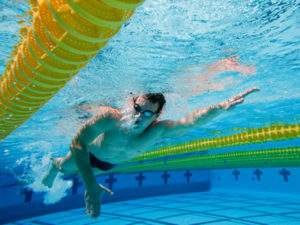The secret of the axis.
I started swimming the summer I was 6 years old for the Tidal Waves. After swimming for a variety of teams for 15 more years, I’ve come to learn a few secrets about the sport of swimming. But of all these secrets, there’s one that I wish that I knew when I was younger. It would have helped me understand how each stroke should feel and would have helped me progress even faster. And that is the secret of the two axes (ax-eez).
There are two types of strokes: ones where your arms move opposite to each other and ones where they move in unison, mirroring their movements. Each are mirrored, just in different ways. As your body moves to mirror those arms, it relies on the different axes of rotation.
Freestyle and backstroke operate with both arms pointing in opposite directions, meaning that when your right hand is pointing above your head, catching water, your left hand is pointing down, releasing the water. At this point, you are on your side. As the two arms switch and you pull all that water down toward your feet, your body needs to rotate to the other side to position your hands in the opposite spots as before. You tighten your core and swap positions of the arms. You have just rotated about the freestyle axis.
Backstroke and freestyle rely on this long axis that stretches from the head to the feet. Whenever you switch hand positions, you engage your core, bring one hand above and out of the water while pulling the other under the water. Almost every underwater picture of a swimmer highlights this rotation–you will actually see the swimmer directly on their side! This rotational motion along this axis will feel natural when you switch. In fact, the way that we need you to twist is the exact way your body is designed! Without following through on this axis of rotation, you severely limit your ability to have a strong pull, causing you sink.
In the same way, butterfly and breaststroke require you to rotate on an axis as you bring your arms back out in front of you. But, instead of rotating side to side, that rotation takes place at the hips. For breaststroke, its during the breath as the arms shoot forward. For butterfly, its during the recovery of the arms overhead while kicking.
For new swimmers, understanding the two axes are key to developing technique that allows them to swim fast. Whenever you swim freestyle or backstroke, always remember to rotate to your side! Most new swimmers try to fight the rotation because they think its faster. Without that rotation, you can’t pull the water right or position you arms for another go around, which makes it slower! With butterfly and breaststroke, remember to bend at the waist. Without using the secret of the axis, you will spend effort staying afloat that could be used to go faster!

